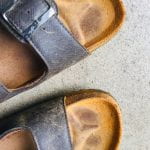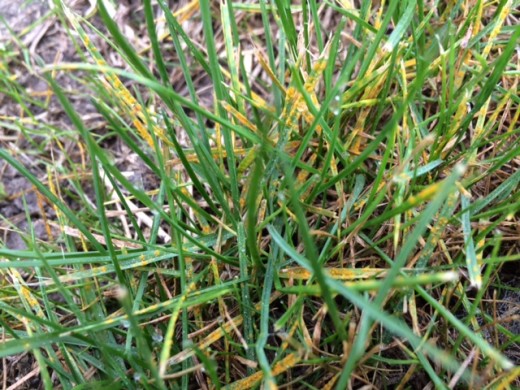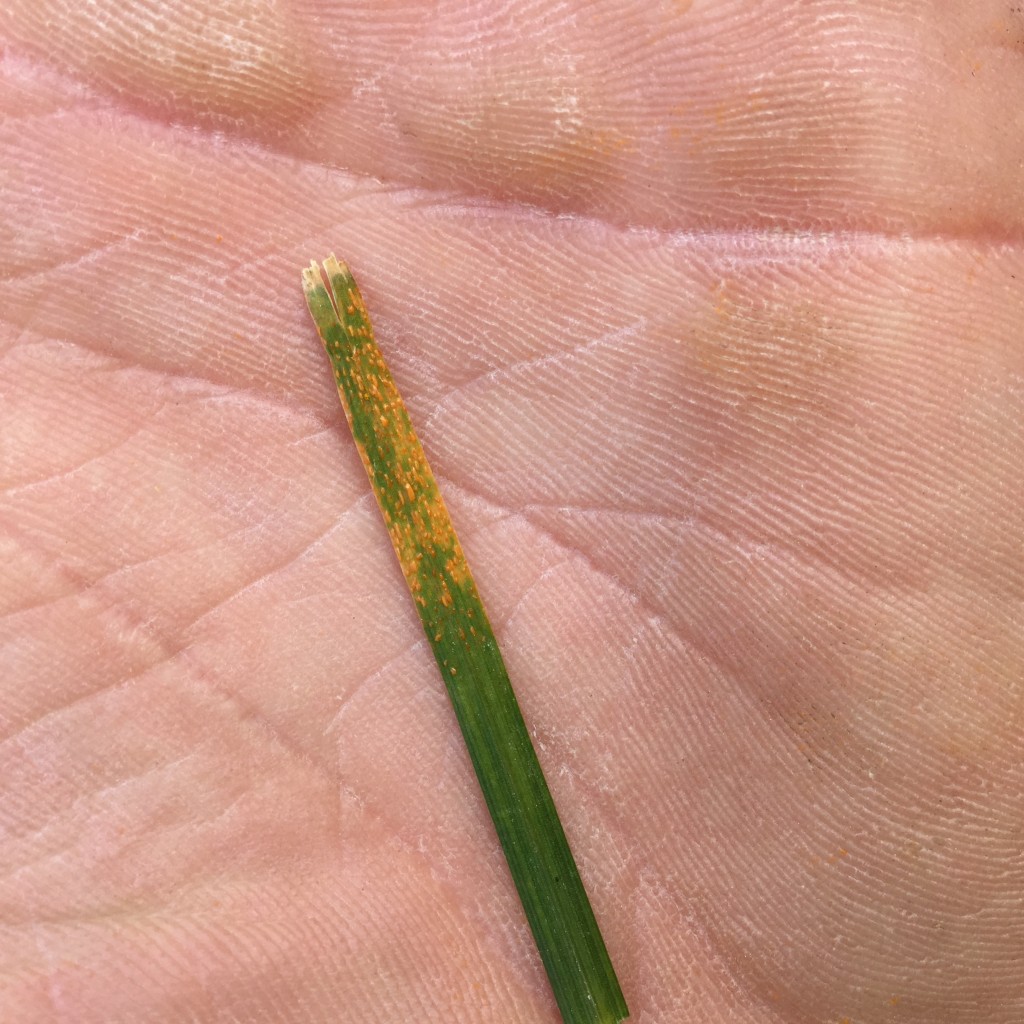(Megan Kennelly, KSU Plant Pathology)
As I write this on Thursday we are looking into a weekend with forecast lows deep down into the 30’s. This comes after a September with multiple days in the 90’s and even more in the upper 80’s. Depending on how the weather shakes out after this weekend our warm-season turf may start showing signs of dormancy. Right now it is all still quite green.
In our cool season turf I’ve not seen much dollar spot lately, and it should be simmering down. I have heard a few reports of rust,
and my first suggestion in those cases is to review the fertility regime and make sure it’s not too low on N.
We are seeing and hearing reports of large patch across the region. Here is one example from today at our research facility in Manhattan:
Spring dead spot happens in … spring. But fall is a time to think about it. I’ll point you to an excellent summary of fall disease info from Dr. Miller next door in Missouri, with details about large patch, spring dead spot and other diseases:
https://turfpath.missouri.edu/reports/2019/10_09_19/




